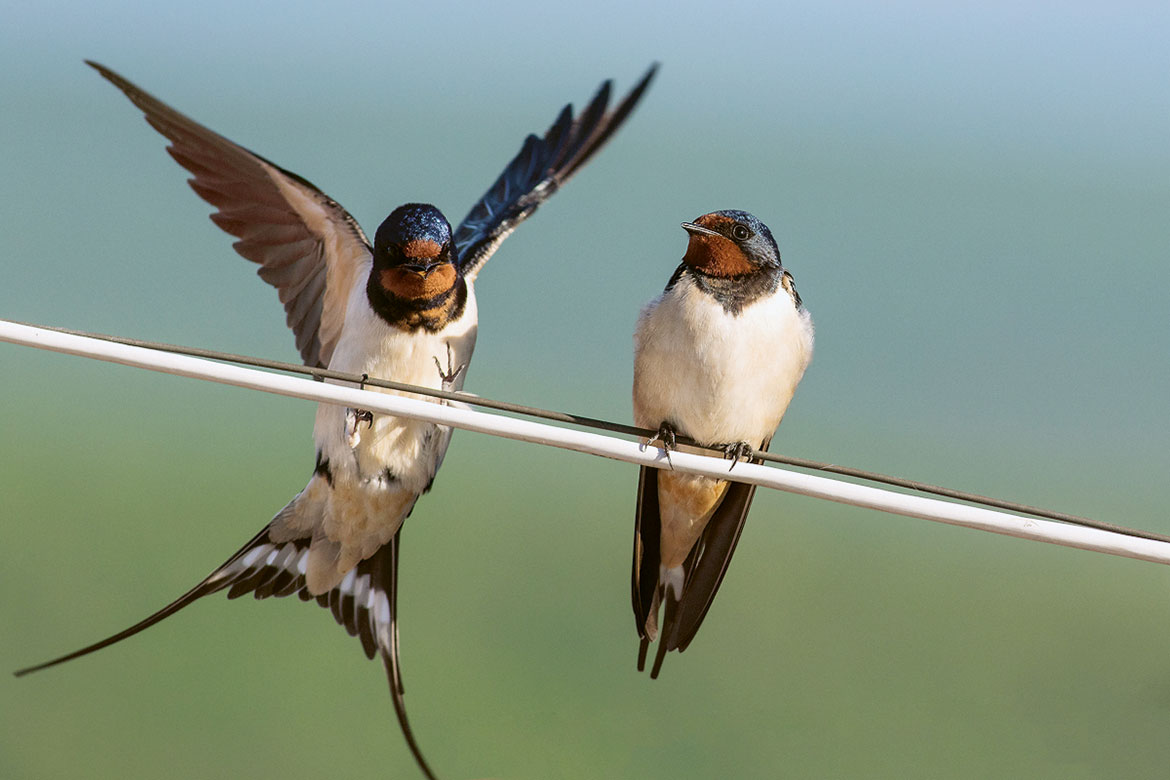Fly away, Peter – stay awhile, Pauline
Male migratory birds leave Africa a few days earlier than females in order to secure the best nesting grounds in Europe. And in autumn, they also set off first on the journey back south.

The male barn swallow (left) begins its spring migration earlier than the female. | Image: Martins Briedis
In many migratory bird species, the males arrive in their nesting grounds in Europe each spring a few days earlier than the females. This is in order to try and secure the best locations. The Swiss Ornithological Institute in Sempach has been conducting a project about this. They’ve now proven that the males arrive earlier not because they can fly faster, but because they leave their wintering areas earlier. In autumn, too, the males are seized by the travel bug first. On average, they fly south roughly two days before the females.
In this study, Silke Bauer and her colleagues evaluated data from 350 birds, following their migratory routes for a year thanks to tiny tracking devices. These birds belonged to 14 different species – all of them relatively small, long-distance flyers that spend the winter south of the Sahara, such as barn swallows, bee-eaters, great reed warblers and hoopoes.
“It surprised us that the male birds also set off earlier in the autumn”, says Silke Bauer. Up to now, she says, researchers can only speculate about the reasons. It might be an advantage to secure territory as early as possible in their wintering areas. Or the later departure of the females might be because they’ve invested more energy in breeding and looking after their chicks, and so need more time to prepare themselves for the strenuous journey back.




